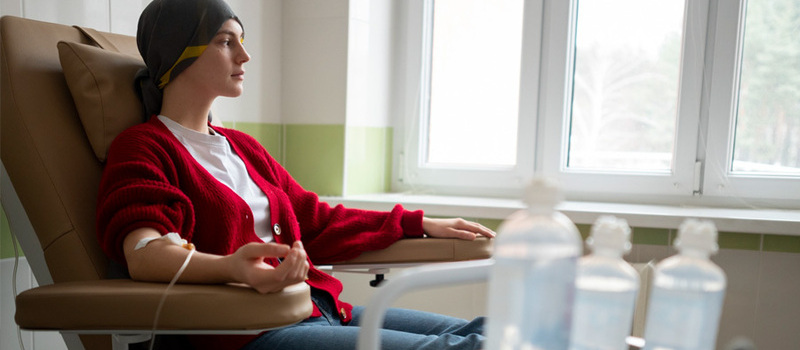
Chemotherapy and nausea usually follow hand-in-hand. Most cancer patients say that the most distressing side-effect of chemotherapy is nausea. Chemo-induced nausea affects almost 70% of adult patients and 58% of adolescents. Even mild nausea can interfere with your diet, recovery, and quality of life.
In this article, we’ll explore seven proven strategies for chemotherapy nausea relief and practical post-chemo vomiting solutions.
Your doctor will advise anti-nausea drugs or antiemetics like ondansetron, prochlorperazine maleate, etc. These drugs should be taken at least an hour before you eat. Your oncologist will recommend the medications throughout chemo sessions and even afterwards, if required. This will help you maximise how much you can eat and allow you to enjoy your meal more.
Another post-chemo vomiting solution is to eat every 2 to 3 hours. Avoid overeating at one go as it can worsen nausea. Similarly, do not keep your stomach empty. Rather than three large meals, opt for six smaller ones. Recommended food includes toast, yoghurt, pretzels, crackers, cheese, milkshake, rice, bananas, etc. Your diet for chemotherapy nausea should focus on low-fat, bland, easy-to-digest foods. Avoid spicy, greasy, or overly sweet items that can trigger sickness.
Dehydration intensifies nausea and fatigue. Move to a fluid diet and sip them regularly. When your stomach is filled with fluids, especially during mealtime, you will feel fuller, and there will be very little room for solid food. Go in for electrolytes, herbal teas, and ginger-infused water. Staying hydrated also helps flush drugs from your system faster, which aids in managing chemo side effects.
Heightened sensitivity to smells is common during chemo sessions. Our sense of taste is affected by smell. Therefore, avoid going into the kitchen when food is being cooked. The odours and smoke can trigger nausea. If possible, stick to cold or normal temperature foods as hot food releases aroma. Keep your space well-ventilated, and use mild air fresheners. Open a window to remove odours.
Ginger, peppermint, and chamomile are three natural ingredients that are known to ease nausea. Ginger root, especially, is perfect for an upset stomach. You can add fresh ginger root to your food, tea, water, or chew ginger candies. Peppermint oil is suitable for aromatherapy.
Absolutely! Don’t force-feed yourself. Eat what you feel like, not something that makes your stomach turn at the very thought of it. Adjust the food as per your taste and preference. Diet for chemotherapy nausea is not a one-size-fits-all approach.
Resting after meals helps digestion, but lying flat can make nausea worse. Instead, sit upright or recline slightly. Keep your head elevated for 30–60 minutes after eating. Engaging in light physical activity, such as short walks, can also help reduce post-chemo vomiting and improve overall recovery.
Chemotherapy drugs attack the rapidly growing cancer cells. Some healthy cells also get targeted because they grow fast, too. Cells in the gastrointestinal tract belong to this category of fast-growing cells. Consequently, chemo treatments affect these cells too, causing inflammation and nausea in patients. Along with coping with cancer treatment symptoms, these tips should help you with chemotherapy nausea relief.